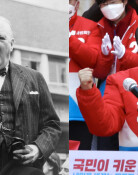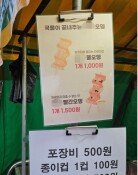Ssangnyeobungi is proven to be the work of Choi Chi-won
Ssangnyeobungi is proven to be the work of Choi Chi-won
Posted January. 24, 2018 08:12,
Updated January. 24, 2018 08:25
Ssangnyeobungi, which is known to be the work of Choi Chi-won (857-?), a highly-gifted writer of Unified Silla, is a fiction depicting a strange relationship between the writer himself and a female ghost. The original title of the fiction was Ssangnyeobungi, but Seong Im (1421-1484) changed the title to “Choi Chi-won” when he compiled the stories of China and Korea to publish “Taepyeongtongjae.” Seong Im also wrote in the book that the Ssangnyeobungi was a fiction originally included in “Silla Suijeon.” Ssangnyeobungi has a significant meaning in the literary history of Korea as it is the greatest story written during a transition period from folk stories to fictions in the 9th century.
There has been controversy about the actual writer of Ssangnyeobungi. This fiction is composed of Part 1, where the life of Choi Chi-won is introduced, Part 2, where the fictional story about the writer and a female ghost unfolds, and Part 3, where the death of the writer is mentioned. The Part 3 has been the cause for suspicion that the work was written after Choi Chi-won was dead.
But a thesis recently published put an end to the controversy. Professor Kim Geon-gon of the Academy of Korean Studies published a thesis entitled “Counter-argument to the Theory that Silla Suijeon is the Work of Choi Chi-won” to Daedonghan Literary Society and claimed that the actual writer of Ssangnyeobungi is arguably Choi Chi-won.
According to the thesis, there is much evidence that the Part 3 of Ssangnyeobungi was not written by Choi Chi-won. In Part 1, where Choi Chi-won introduces his background, he said he passed the civil servant examination at the first attempt. And there is the same story in the Part 3. Furthermore, the style of writing shown in the conversation between Choi Chi-won and two women is very figurative and flowery while in Part 3 it is all simple description about the writer’s background. “The writing style in Part 3 is completely different from that of Choi Chi-won, who made the enemy’s general fall from his bed with his mastery in writing show in Gyeokhwangsomun,” said Kim. “Part 3, where personal stories of Choi Chi-won is introduced, appears to be added later by another writer.”
The controversy appears to be created when Seong Im revised Ssangnyeobungi to publish Taepyeongtongjae, a compilation of anecdotes and poetries from China and Korea written before the 15th century. In many cases, Seong Im changed the title of many stories into the name of their writers and added content. “The controversy has been caused by Seong Im as he added some parts of “Choi Chi-won Yeoljeon,” which was written after the death of Choi Chi-won, to Ssangnyeobungi,” said the professor. “Additional discussion is necessary as the story of ‘Choi Chi-won,’ which was revised by Seong Im, is different from that of Ssangnyeobungi.”
Headline News
- Joint investigation headquarters asks Yoon to appear at the investigation office
- KDIC colonel: Cable ties and hoods to control NEC staff were prepared
- Results of real estate development diverged by accessibility to Gangnam
- New budget proposal reflecting Trump’s demand rejected
- Son Heung-min scores winning corner kick







